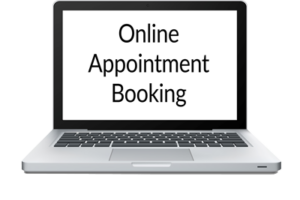If you are a solo entrepreneur or are otherwise self-employed, you are aware that it is nearly impossible to take into account all the various tax consequences of your business decisions. You have a business to run and customers to please, so decisions are often made on the fly.
You hope that you will be able to sort it out adequately at a later date. The problem with this strategy is you are likely paying thousands of dollars in taxes to Revenue Canada that could otherwise be in your pocket.
This is where effective tax planning comes into play. A professional tax advisor will assist you in considering the tax implications of your decisions so that you get the most ‘bang for your buck.’ In today’s economic climate, self-employed persons, cannot afford to be shelling out extra tax money to the government. As you review your business plan each year, don’t neglect to include tax planning into the equation.
Tax Strategies for the Self-Employed
Income Splitting
Employing immediate family members in the business can move income from a high tax-rate individual to a lower one. Your spouse and children are eligible candidates. This strategy makes them eligible for RRSP and CPP contributions as well. Wages must be reasonable and if you plan it properly, the wages you pay may not have any tax burdens attached to them.
Other income splitting strategies include:
- Creating a partnership with family members and sharing in the profits.
- Paying a fee on pledged assets or loan guarantees to a family member.
- Appointing adult family members as shareholders of an incorporated company and paying dividends.
- Appointing adult family members as directors of the corporation and paying directors fees.
These are a few possible options for income splitting that may be available to you. Discuss these and other income splitting strategies with your tax advisor to ensure you are tax compliant.
Save Your Receipts All of Them
Murphy’s Law states that the only receipts that Revenue Canada will want to see are the ones that you can’t find. The best practice is always to save every potential business receipt. Record the who, what, where, and why on the receipt and file it accordingly. Then you can let your tax advisor determine whether it is a legitimate business expense for tax deduction purposes.
Capital Cost Allowance
Work with a tax advisor to determine the opportune time to acquire assets. The timing of the purchase can have a dramatic effect on your tax burden depending on the time of year and specific circumstances. You may be able to make year-end asset purchases and gain significant CCA deductions.
Utilize Loss Carry Forward
Be sure to carry forward losses from previous years if applicable. These can have significant tax benefits in more profitable years; however, there is a time limit to use them up.
A quality tax advisor can be a significant resource for adding profit to the bottom line of the self-employed businessman. The tax code is simply too complicated for busy entrepreneurs to deal with by themselves. Tax planning takes the guesswork out of decision-making and contributes positively to the health of the business.
If you have questions about tax planning for the self-employed, contact our office and we will get you connected with the best person to answer those questions.
Questions about Tax Tips for the Self-Employed?
Contact our office!
Copyright © 2019 AdvisorNet Communications Inc. All rights reserved. This article is provided for informational purposes only and is based on the perspectives and opinions of the owners and writers only. The information provided is not intended to provide specific financial advice. It is strongly recommended that the reader seek qualified professional advice before making any financial decisions based on anything discussed in this article. This article is not to be copied or republished in any format for any reason without the written permission of the AdvisorNet Communications. The publisher does not guarantee the accuracy of the information and is not liable in any way for any error or omission.



















